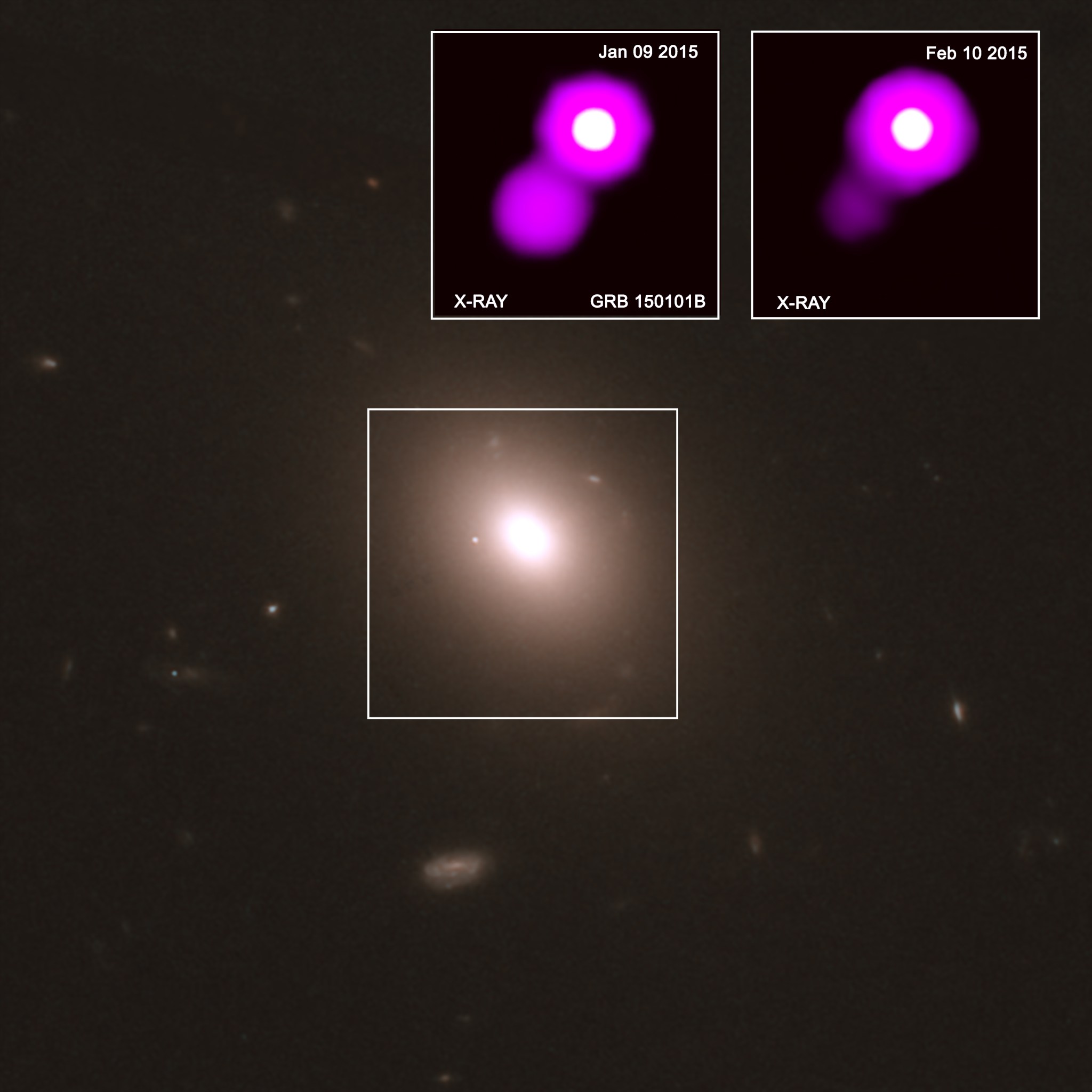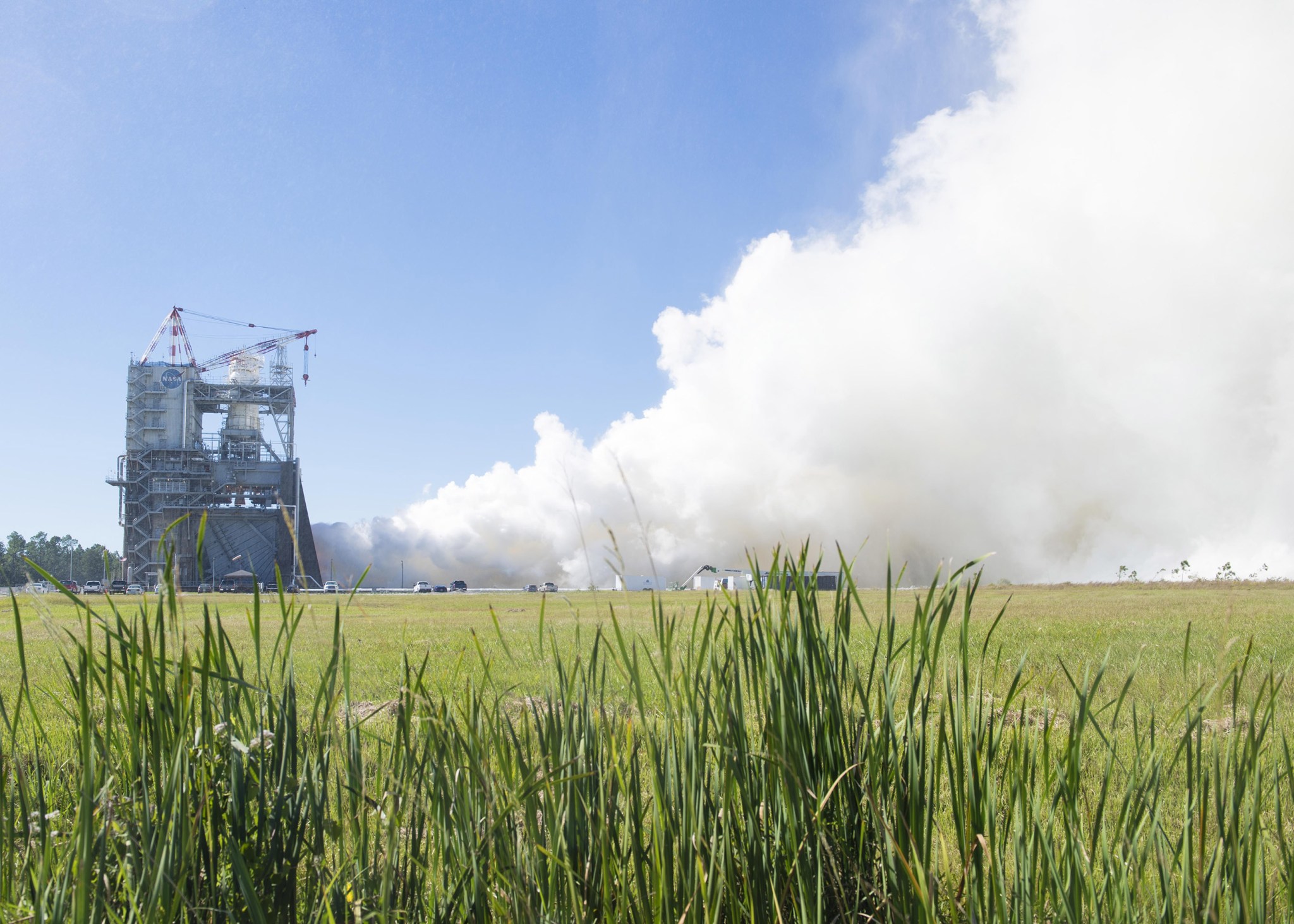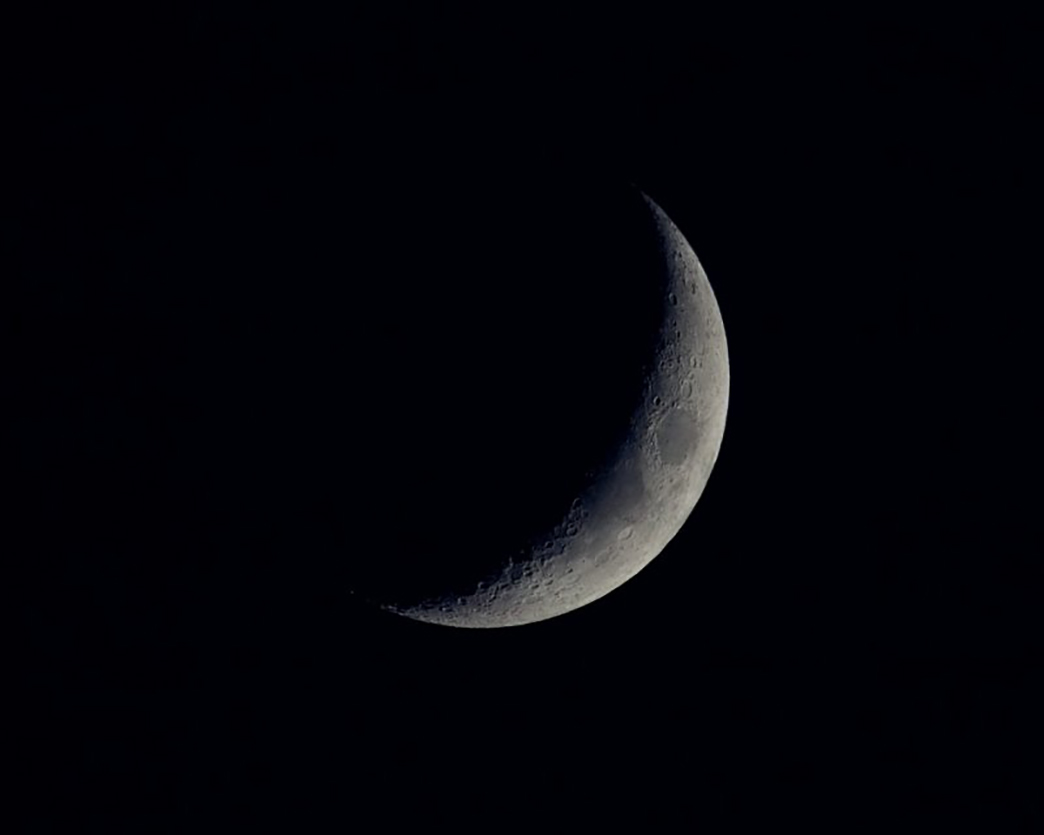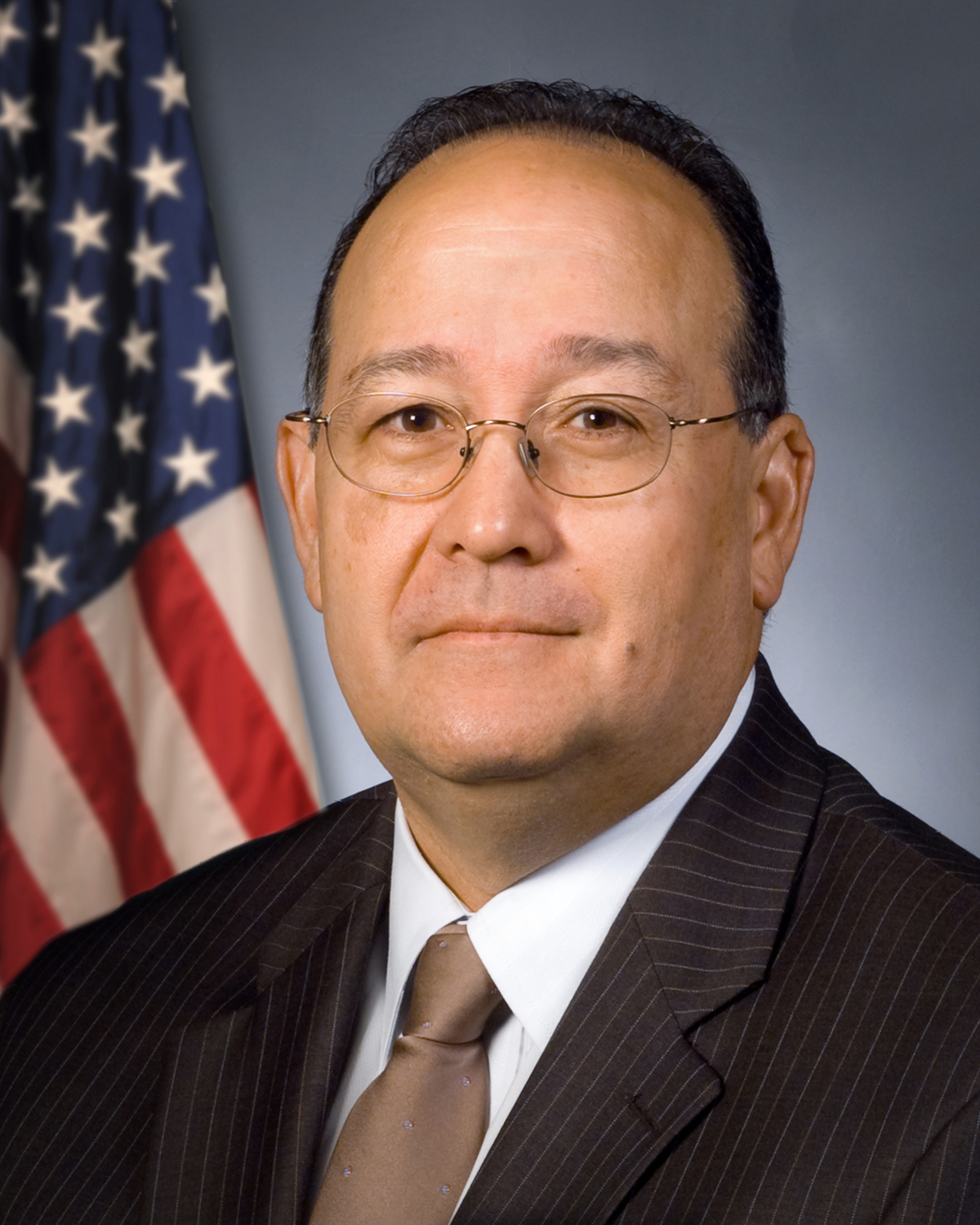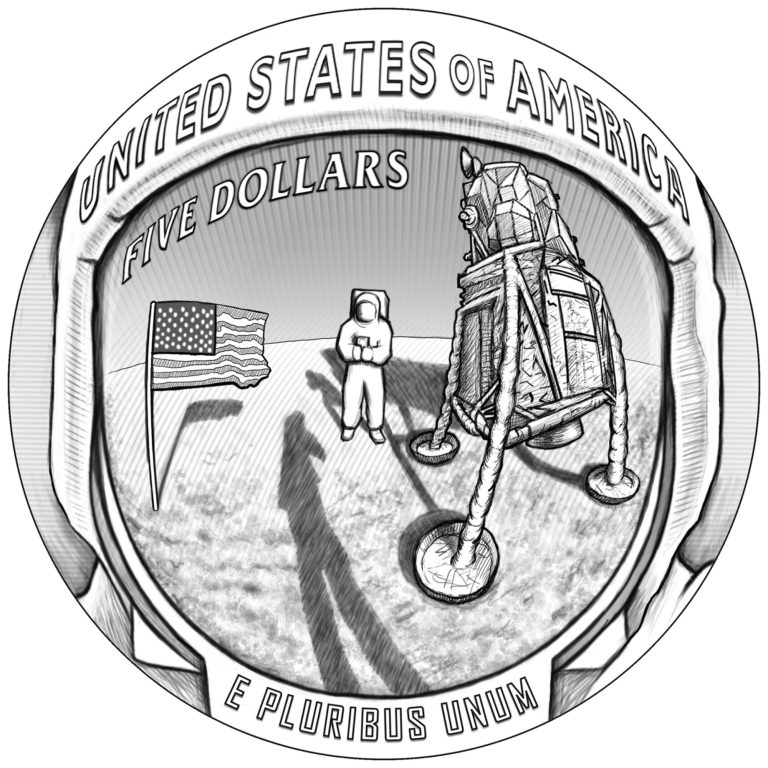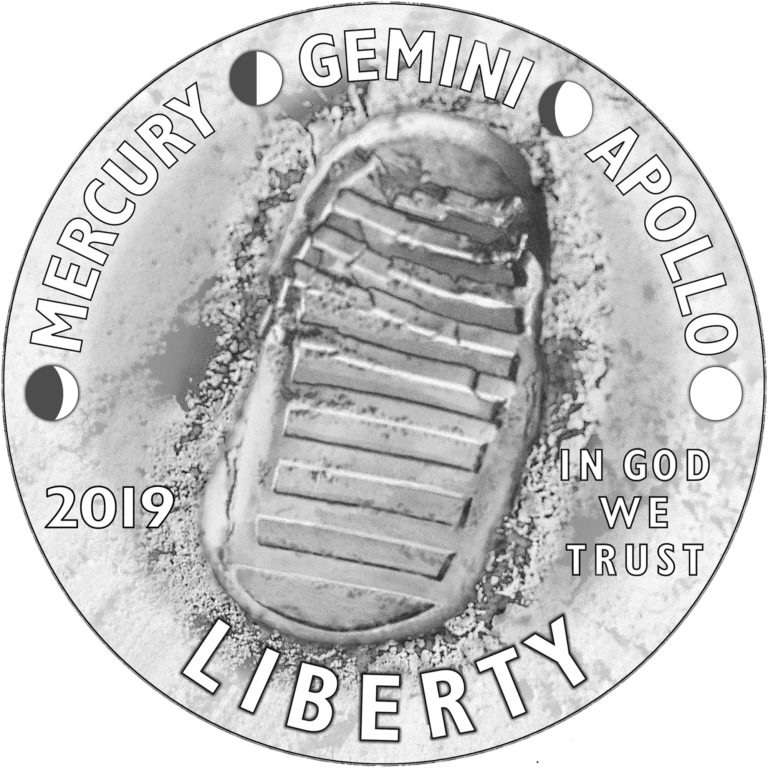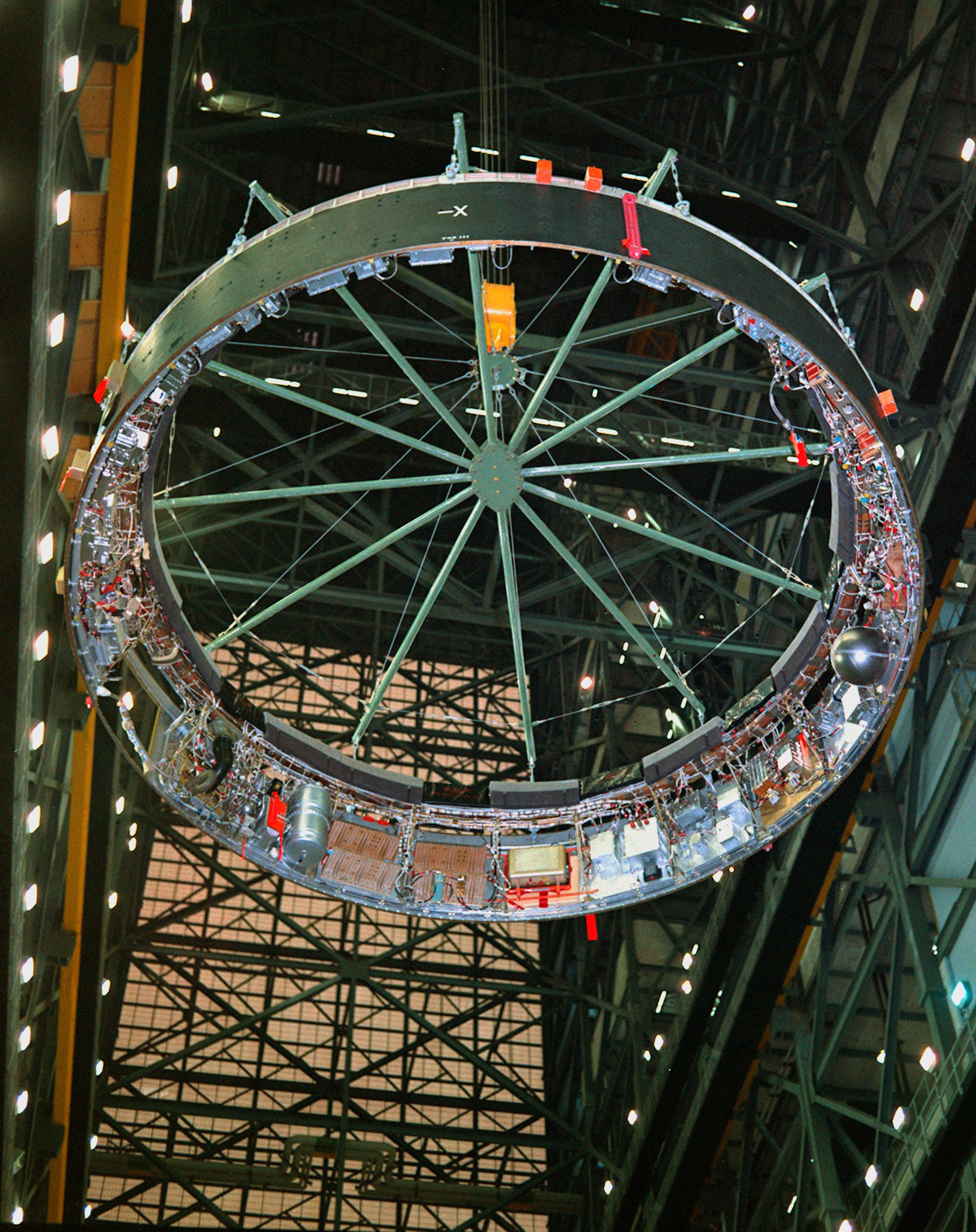In This Week’s Star
- All in the Family: Kin of Gravitational-Wave Source Discovered
- NASA Continues Fall Series of RS-25 Engine Tests
- Marshall, Huntsville to Celebrate International Observe the Moon Night Oct. 20
- Marshall to Commemorate National Hispanic Heritage Month Oct. 18
- Astronaut, Cosmonaut Safe After Abort During Launch to International Space Station
- 2018 Combined Federal Campaign Kicks Off
- U.S. Mint Unveils Apollo 11 50th Anniversary Commemorative Coin
- Marshall Team Members View Screening of ‘First Man’
- This Week in NASA History: Saturn V Instrument Unit Testing Begins at Marshall – Oct. 15, 1965
- Obituaries
All in the Family: Kin of Gravitational-Wave Source Discovered
About a year ago, astronomers excitedly reported the first detection of electromagnetic waves, or light, from a gravitational wave source. Now, a year later, researchers are announcing the existence of a cosmic relative to that historic event. The discovery was made using data from telescopes including NASA’s Chandra X-ray Observatory, Fermi Gamma-ray Space Telescope, Neil Gehrels Swift Observatory, the NASA/ESA Hubble Space Telescope and the Discovery Channel Telescope. The object of the new study, called GRB150101B, was first reported as a gamma-ray burst detected by Fermi in January 2015. This detection and follow-up observations at other wavelengths show GRB150101B shares remarkable similarities to the neutron star merger and gravitational wave source discovered by Advanced Laser Interferometer Gravitational Wave Observatory and its European counterpart Virgo in 2017 known as GW170817. The latest study concludes that these two separate objects may, in fact, be related. (X-ray: NASA/CXC/GSFC/UMC/E. Troja et al.; Optical and infrared: NASA/STScI)
NASA Continues Fall Series of RS-25 Engine Tests
A team of operators at NASA’s Stennis Space Center conducted another successful 500-second RS-25 hot fire test on the A-1 Test Stand at Stennis on Oct. 11, marking the fourth in a series that will extend into 2019. Once again, the hot fire features an acceptance test of an RS-25 engine controller for use on a future flight of NASA’s new Space Launch System rocket. RS-25 testing represents a critical step in development of the SLS. A quartet of RS-25 engines, firing simultaneously, will provide a combined 2 million pounds of thrust to help launch the new rocket. The SLS Exploration Mission-1 will test the new rocket and carry an uncrewed Orion spacecraft into space beyond the Moon. To view the entire 500-second test, click here. (NASA)
Marshall, Huntsville to Celebrate International Observe the Moon Night Oct. 20
On Oct. 20, from 5:30-8:30 p.m., NASA’s Marshall Space Flight Center will host the 8th annual International Observe the Moon Night celebration at the U.S. Space & Rocket Center’s Davidson Center. Team members and their families are encouraged to join in the activities.
The event will include lunar and solar system exploration exhibits and a variety of hands-on activities for children and adults. The Von Braun Astronomical Society will provide telescopes for lunar observation, and NASA team members will share information and answer questions. Representatives of Marshall’s Academic Affairs Office also will help young people build “candy rovers,” honoring vehicles used to traverse the Moon — and next-generation versions set to explore Mars.
Janet Ivey, the host of the PBS series “Janet’s Planet,” will lead a presentation on the 50th anniversary of the Apollo Moon missions; Huntsville-based magician Doctor Osborn’s Science Magic Show will perform; and Mister Bond & The Science Guys of Nashville will lead space science experiments. Visitors also can experience a virtual 3D trip to the Moon via the Astronomy Van’s simulated, command-module view of the lunar surface. Free face painting, a photo booth and live DJ music will be provided.
The U.S. Space & Rocket Center is Marshall’s official visitor center. Marshall’s Planetary Missions Program organized and will host the event, which encourages visitors to observe Earth’s only natural satellite and learn more about its critical connection to NASA planetary science and exploration.
Marshall to Commemorate National Hispanic Heritage Month Oct. 18
Ray Lugo, director of the Florida Space Institute in Orlando and former director of NASA’s Glenn Research Center, will be the keynote speaker Oct. 18 at Marshall Space Flight Center’s annual Hispanic Heritage Month celebration.
The event is set for 10 a.m. in Building 4200, Room P-110. All Marshall team members are invited to attend.
The theme for the 2018 celebration is “One Endless Voice to Enhance Our Traditions.” Participants will have an opportunity to meet Lugo after his speech, and sample ethnic foods from Central America and South America. Live music will be provided by the local band 4 Amigos.
The program also will include cultural presentations about Dia de los Muertos — the Mexican Day of the Dead tradition — and parrandas, a traditional musical style performed with acoustic guitars, drums and various handmade instruments in Puerto Rico, Cuba, Honduras, Guatemala and other Latin American countries.
Lugo retired from NASA in early 2013 and was appointed director of the Florida Space Institute that same year. The organization, maintained by Florida universities and academic institutions, leads statewide contributions to space research, scientific and technological development and education activities tied to NASA’s mission.
The event is organized by the Office of Diversity and Equal Opportunity. For more information, contact Abbie Johnson, Marshall equal employment manager.
Americans observe National Hispanic Heritage Month from Sept. 15 to Oct. 15 each year, honoring the histories, cultures and contributions of U.S. citizens of Spanish, Mexican, Caribbean and Central and South American lineage. President Lyndon Johnson inaugurated the tradition in 1968, first as Hispanic Heritage Week. It was expanded in 1988 by President Ronald Reagan to cover its current, 30-day period, encompassing several dates significant to members of the Hispanic community. Sept. 15 marks the anniversary of independence for the Latin American countries of Costa Rica, El Salvador, Guatemala, Honduras and Nicaragua. Mexico and Chile celebrate their independence days on Sept. 16 and Sept. 18, respectively.
Astronaut, Cosmonaut Safe After Abort During Launch to International Space Station
American astronaut Nick Hague and Russian cosmonaut Alexey Ovchinin are with their families after an anomaly occurred shortly after their launch to the International Space Station.
The Soyuz MS-10 spacecraft launched from the Baikonur Cosmodrome in Kazakhstan to the space station at 3:40 a.m. CDT Oct. (2:40 p.m. in Baikonur time) carrying Hague and Ovchinin. Shortly after launch, there was an anomaly with the booster, and the launch ascent was aborted, resulting in a ballistic landing of the spacecraft.
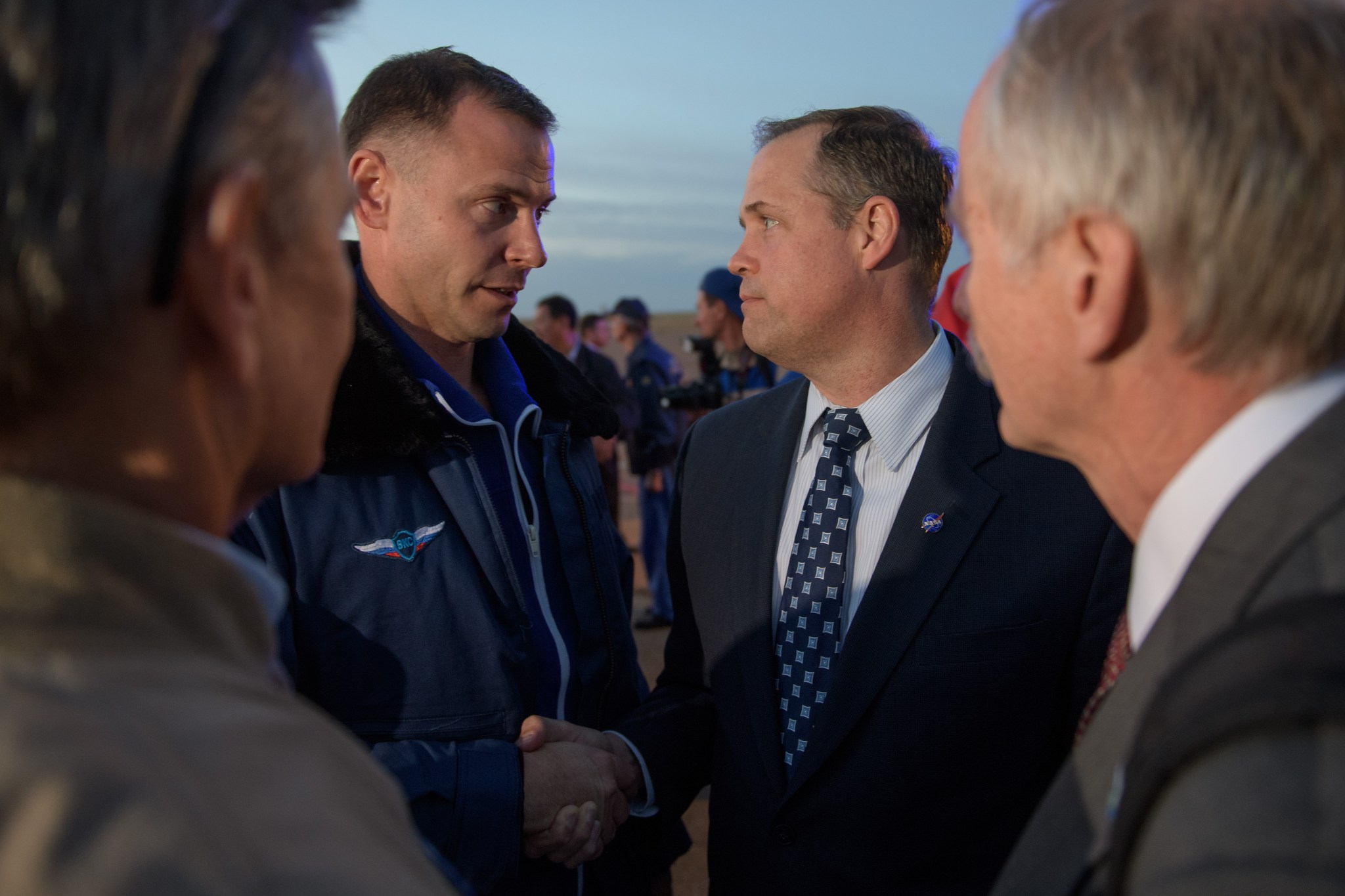
Search and rescue teams deployed to the landing site, arriving on location before the spacecraft landed. Hague and Ovchinin were recovered from the capsule and were in good condition. The crew landed south of the city of Zhezkazgan, Kazakhstan, and was transported by helicopter to the nearby city. A Roscosmos plane then flew the pair to Baikonur, where they were greeted on the tarmac by their families, NASA Administrator Jim Bridenstine, Roscosmos Director General Dmitry Rogozin, and other NASA and Roscosmos officials.
Hague and Ovchinin were taken to a local hospital for precautionary medical checks. They were flown back to Moscow after medical checks in Kazakhstan then returned home to their families. Hague returned to Houston on Oct. 13.
Expedition 57 Commander Alexander Gerst of the European Space Agency, NASA Flight Engineer Serena Auñón-Chancellor and Roscosmos Flight Engineer Sergey Prokopyev, who arrived at the station in June, were informed of the launch abort and are continuing to operate the station and conduct important scientific research.
Roscosmos has formed a commission to assess the root cause of the failure, and NASA will support Roscosmos’ investigation into the incident. In parallel, NASA and the international station partners will review upcoming operational schedules, including the plan for two spacewalks targeted later in October.
In an interview, Bridenstine shared his experience witnessing the launch in Kazakhstan, as well as his admiration for the NASA and Roscosmos teams who demonstrated how well prepared and expert they were in responding to the situation. He also gave high praise to Hague’s wife, Catie, for remaining cool under pressure.
Rogozin said in an interview that he was pleased with his team’s response, and that a Russian commission would work to understand the cause of the failure and continue working with NASA and the rest of the international station partner agencies to support continued station operations.
Kenny Todd, International Space Station operations integration manager, shared his thanks with the Russian search and rescue teams in a news conference on NASA Television, praising their professionalism and expertise in doing their jobs quickly and efficiently to ensure the safety of the crew. He noted the station is well-supplied for the Expedition 57 crew members who are on board. Deputy Chief Astronaut Reid Wiseman noted that the safe return of the crew members is good news, demonstrating that the safety systems worked as designed, and the teams performed as they have practiced, to ensure the safety of Hague and Ovchinin.
Visit the Expedition 57 Flickr for photos from the day’s events.
For video replays from the launch go to: https://images.nasa.gov/details-Expedition_57_Launch_Replays.html.
2018 Combined Federal Campaign Kicks Off
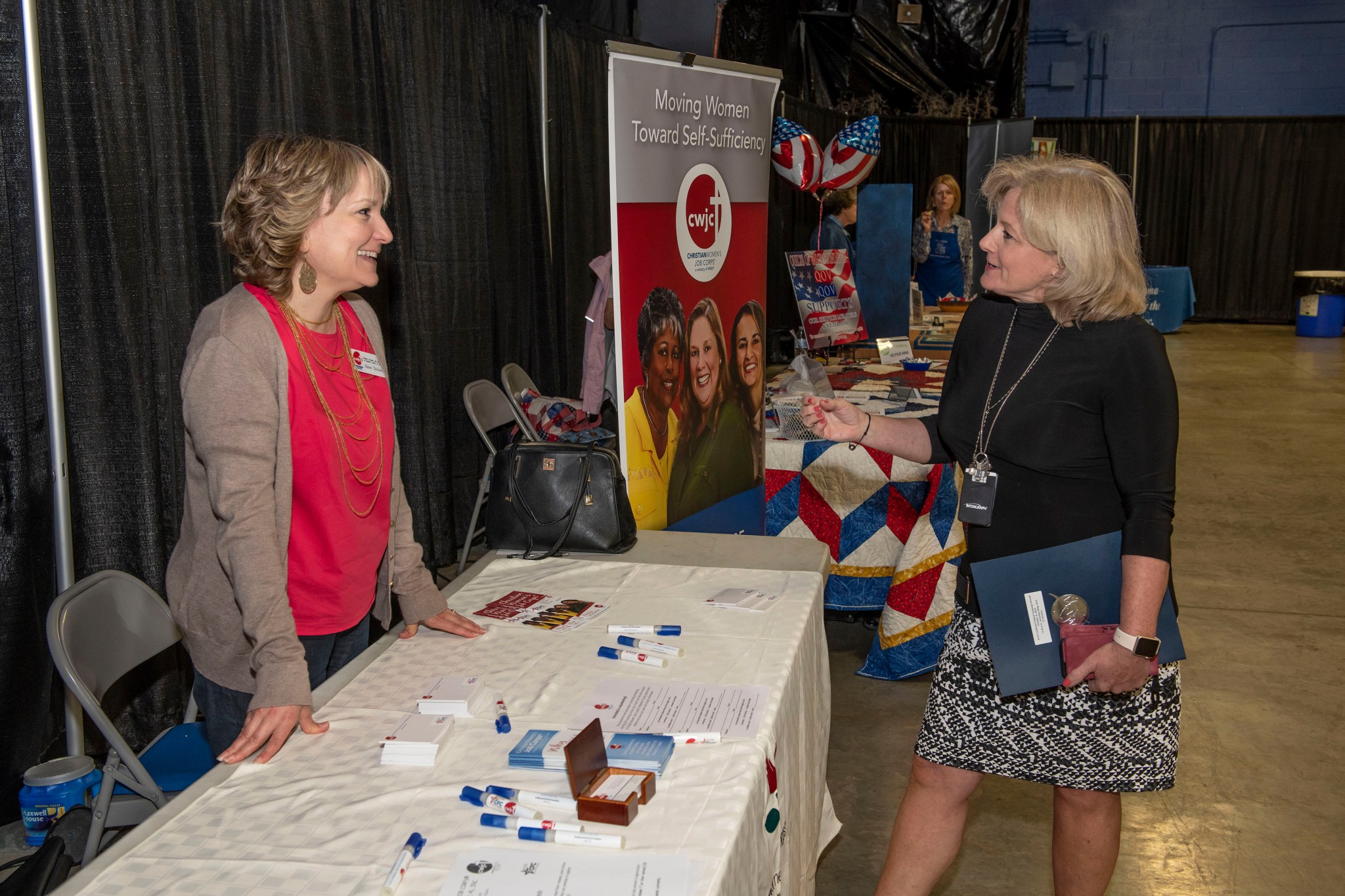
NASA Marshall Space Flight Center Director Jody Singer talks with Elaine Dickson, executive director of the Christian Women’s Job Corps in Huntsville, at the 2018 Team Redstone Combined Federal Campaign Charity Fair and Kickoff event Oct. 16. Dickson and her organization was one of 40 charities at the event. CFC is a national, annual fundraising drive that provides ways for federal employees to give back to charities and their community. The 2018 campaign, themed “Show Some Love,” is open through Jan. 11, 2019. Employees wishing to donate can visit the CFC ExplorNet page for more information. (NASA/Fred Deaton)
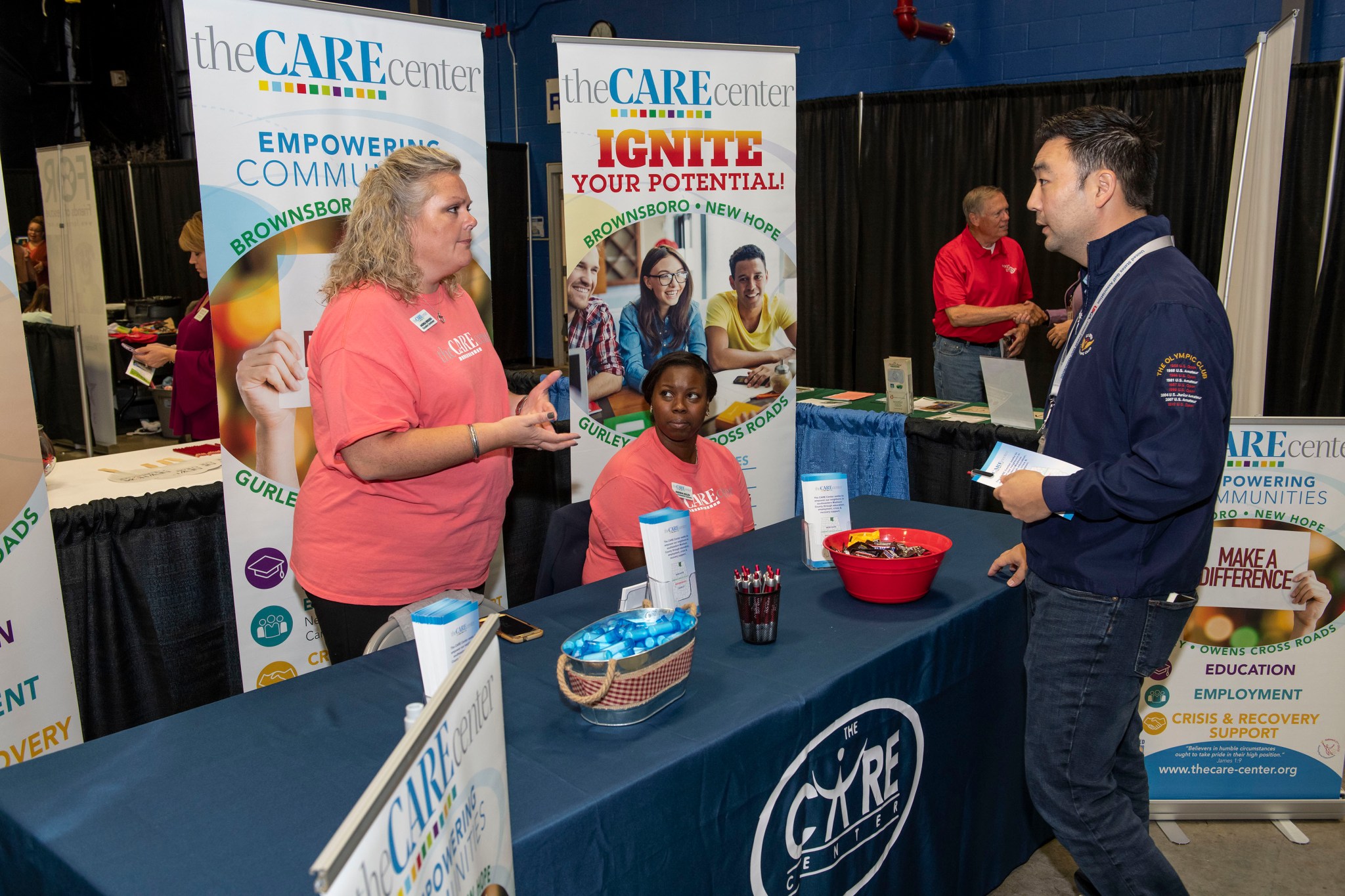
Marshall’s Mat Park, right, talks with Andrea Bridges, left, and Aneisha Nolen, both of The CARE Center in Huntsville, at the 2018 CFC Charity Fair Oct. 16. Charities participating in the campaign support a variety of needs in North Alabama and nationally, such as veterans, animal shelters and people in need of medical, housing and food assistance. (NASA/Fred Deaton)
U.S. Mint Unveils Apollo 11 50th Anniversary Commemorative Coin
To celebrate the 50th anniversary of the first manned landing on the Moon, the U.S. Mint will release a series of Apollo 11 50th Anniversary Commemorate Coins beginning in January 2019. The Mint unveiled the designs for the 2019 Apollo 11 50th Anniversary Commemorative Coin Program at an Oct. 11 event at the Smithsonian National Air & Space Museum in Washington.
The mint invited American artists to design a common obverse image that is emblematic of the U.S. space program leading up to the first manned Moon landing. The winning design is by Gary Cooper of Belfast, Maine, and features the inscriptions “MERCURY,” “GEMINI” and “APOLLO” — separated by phases of the Moon — and a footprint on the lunar surface. The reverse design is by mint sculptor-engraver Phebe Hemphill and features a representation of a close-up of the iconic photograph of astronaut Buzz Aldrin on the Moon taken July 20, 1969, showing just the visor and part of Aldrin’s helmet. The reflection in Aldrin’s helmet includes astronaut Neil Armstrong, the U.S. flag and the lunar lander.
The front-facing and reverse designs will be featured on the four coins in the program: a $5 gold coin, a standard size $1 silver coin, a half-dollar clad coin, and a 5 ounce $1 silver-proof coin. In a manufacturing first for the mint, the 5 ounce silver proof coin will be curved, as will the other coins in the program.
From October 2018 through December 2022, NASA will mark the 50th anniversary of the Apollo Program that landed a dozen astronauts on the Moon between July 1969 and December 1972, and the first U.S. crewed mission – Apollo 8 – that circumnavigated the Moon in December 1968.
Marshall Team Members View Screening of ‘First Man’
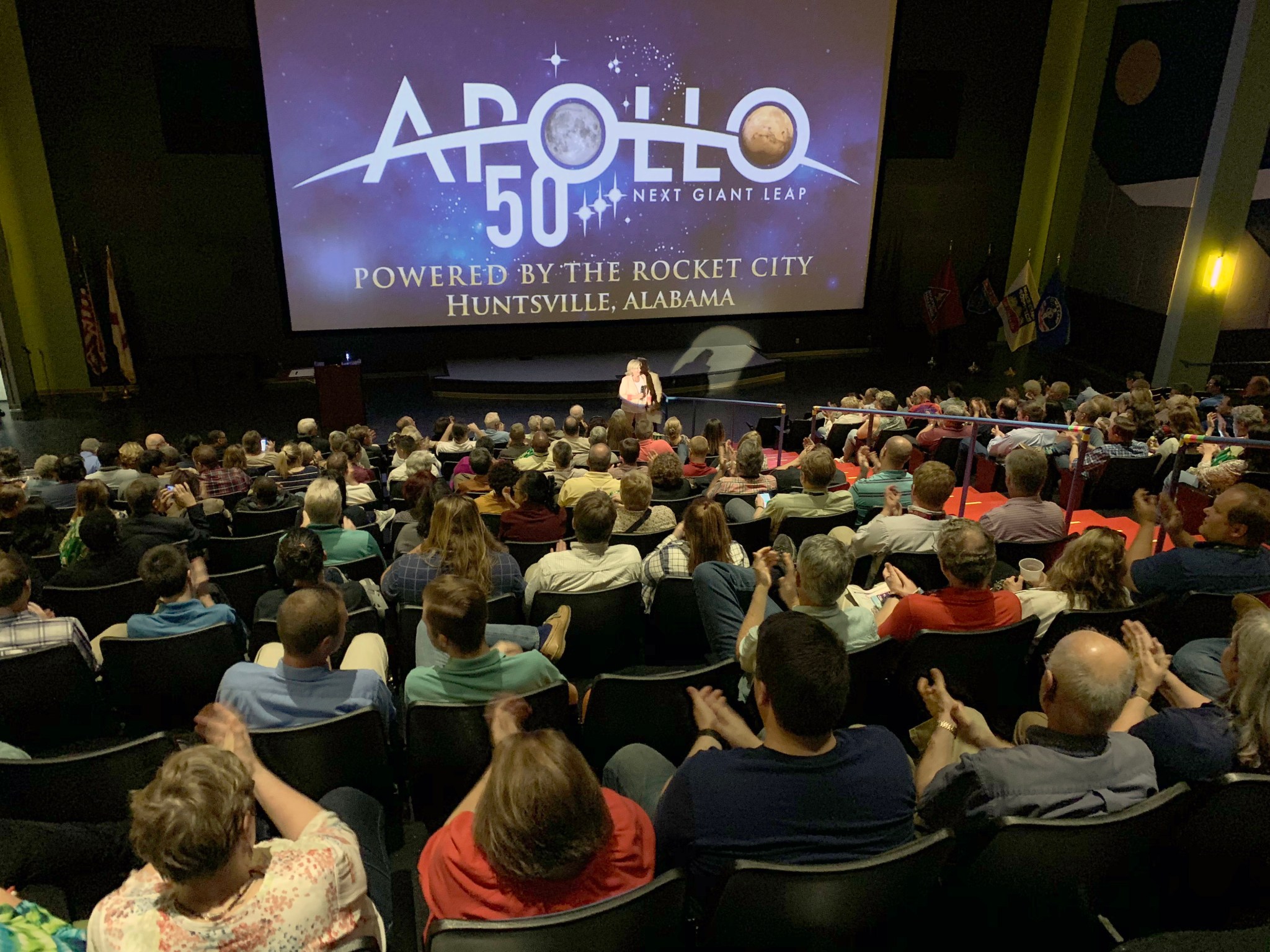
NASA Marshall Space Flight Center team members listen as Center Director Jody Singer gives opening remarks before viewing a pre-release screening of the movie, “First Man,” Oct. 11 at the U.S. Space & Rocket Center. Starring Ryan Gosling and Claire Foy, “First Man” is about the life of former NASA astronaut Neil Armstrong from 1961-1969, on his journey to become the first human to walk on the Moon. The film explores the sacrifices and costs on Armstrong, his family and the entire nation during one of the most dangerous missions in the history of space travel. (NASA/Jonathan Deal)
This Week in NASA History: Saturn V Instrument Unit Testing Begins at Marshall – Oct. 15, 1965
This week in 1965, technicians at NASA’s Marshall Space Flight Center began testing the Saturn V Instrument Unit dynamic test article, S-IU-200D/500D. Designed by Marshall and built by International Business Machines, the Instrument Unit served as the “nerve center” for the Saturn V, providing guidance and control, command and sequence of vehicle functions, telemetry and environmental control. Here, the Instrument Unit for the Apollo 4 mission is hoisted for mating to the S-IVB or third stage. The NASA History Program is responsible for generating, disseminating, and preserving NASA’s remarkable history and providing a comprehensive understanding of the institutional, cultural, social, political, economic, technological and scientific aspects of NASA’s activities in aeronautics and space. For more pictures like this one and to connect to NASA’s history, visit the Marshall History Program’s webpage. (NASA)
Obituaries
John M. Knadler III, 87, of Huntsville, died Sept. 26. He retired from the Marshall Center in 1989 as a materials engineer.
Charles “Chuck” P. Verschoore, 84, of Madison, Alabama, died Oct. 8. He retired from the Marshall Center in 1995 as an aerospace engineer. He is survived by his wife, Shirley S. Verschoore.


























